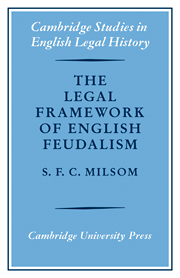For five centuries most lawsuits claiming land hinged on the exercise of a right of entry whereby the claimant had become instantly seised. Historians have assumed that he had previously been disseised, the disseisor’s wrongful possession not having matured into a protected seisin. But the mechanism, not confined to reversing disseisins, was the alternative to a real action and therefore claimed title by inheritance. Inheritance did not start as the automatic devolution of a non-existent ownership. On each death the lord made a new grant to the heir and put him in seisin, which was not an abstraction like possession but by definition conferred by the lord. Changes beginning in the 12th century eroded the lord’s part in inheritance: instead of putting heirs in seisin lords athorised them to put themselves in; and finally one had the right of entry if a supposed lord could have given authority.
